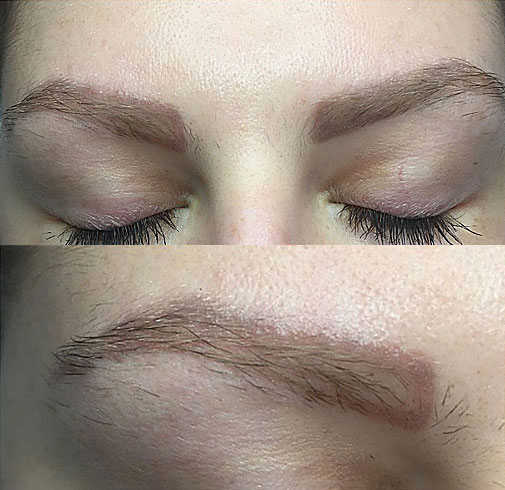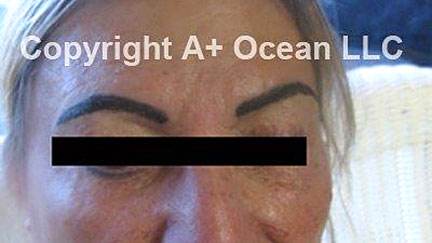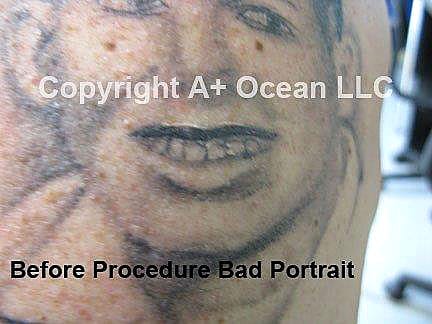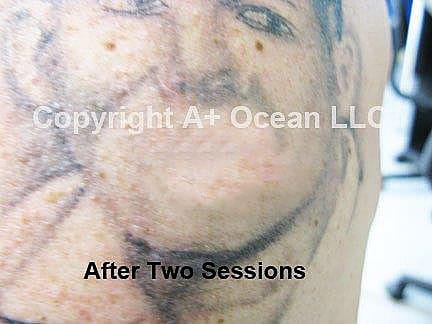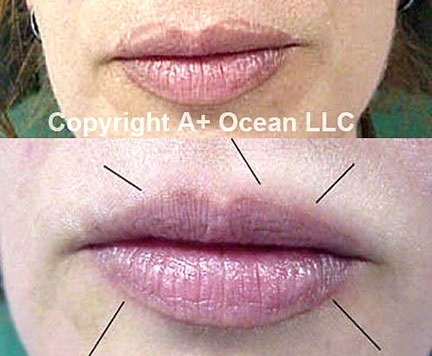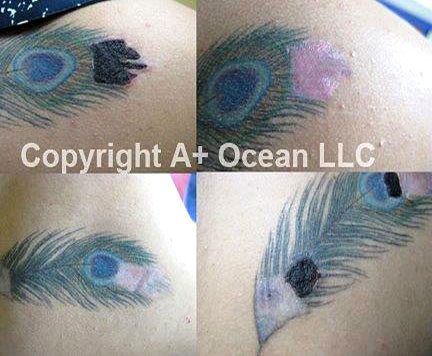Saline Tattoo Removal (non laser)
Conventional and cosmetic tattoo removal
Read Mary J’s story and testimonial.
- Saline Tattoo Removal solution is the first hypertonic sterile saline solution on the Market intended to remove tattoos.
- All Natural – using the finest and purest sea salt available in the world.
- Carcinogen free.
- Sea salt is much gentler, less expensive and traumatic than Laser to remove tattoos. Colour and type of Ink may require several different types of lasers for removal. Sea salt doesn’t recognise ink colour so Saline Tattoo Removal is a highly successful method of removal.
- Heals Naturally – Saline Tattoo Removal creates a superficial controlled scab. A natural healing process removes or lightens the pigment when the scab falls off.
- It works through the process of Osmosis – By introducing a high concentration of sea salt water into the Dermis of the skin where unwanted pigment resides, water in the cells beneath and surrounding the pigment (which contain lower concentrations of sea salt) will create osmotic pressure and thus rise to the areas containing the higher concentrations of sea salt. With this process of equalisation, pigment is forced from the Dermal layer upward to the Epidermal layer by osmotic pressure.
How Does the Saline Method work?
The saline method utilises traditional tattoo equipment that is commonly used to introduce ink to the deep layers of the skin. Instead of ink, the saline method injects a saline solution into the skin that effectively bonds to pigment molecules trapped deep below the superficial layers. The body naturally recognises these bound pigment particles and pushes them up toward the surface of the skin, eventually ejecting them and causing the area to scab and heal.
Saline solution is delivered into the Epidermis where the body filters it and draws it down into the dermis and causes an inflammation in the dermis which then expels the pigment and forces the pigment particles to the skins surface as a controlled scab.
How effective is the Saline Method?
While the efficacy of other methods may be limited by the age of the tattoo or the pigments used, the Saline Method can remove both old and new tattoos regardless of pigments used. This method is also effective on amateur and professional grade tattoos and permanent makeup. Additionally, since the saline method does not rely on destruction of skin layers, the risk of scarring is considerably lower than more traditional methods. Finally, pain and wait time between treatments is decreased when compared to laser treatments.
| Cosmetic and Conventional Tattoo Removal | $200 per treatment |
| After-care oil | $35 |
How does the Saline treatment work?
The technician will tattoo Saline Tattoo Removal salt/saline solution into the tattoo. The Hypertonic Saline Solution draws the H20 from the cells in the tissue (Hypertonic). This allows the pigment particles to be released from microscopic scar tissue that contains the pigment particles. Once the epidermis area is open and no more than one square inch of skin up to four complete passes. This is about the size of a set of full brows. The removal is a process and can take several sessions, but is much safer than many laser removal treatments, especially for darker skin types or sensitive skin.
What can the client expect during and after treatments?
During the treatment the client should expect bleeding and some bruising. There will also be tenderness of the area for a few days. The area should scab over within 48 hours. Pigment may be visible in the scab, the scab is critical and should not be touched, kept clean and not soaked in water. The results will not be known for at least thirty days.
How long will it last?
Depending on skin type, age, health and after care of tattooed area the pigments can last 6 months to 3-4 years. It is recommended for clients who want to keep their Permanent makeup “looking fresh” to return every 12 months for a touch-up which will boost the colour. This is offered at half price to existing clients.(Clients with skin that is oily or sweats a lot wont hold pigment as well.
What are the benefits of this procedure?
The tattoo is lighter and could possibly fade completely over time. This removal technique is safe for most skin types. The salt/saline removal is safer and has less risks of hyper/hypo pigmentation, blistering, and scarring than laser removal treatments. The skin may be tattooed over once the area has sufficiently healed.
Who are the best candidates?
Individuals who are patient and willing to follow aftercare instructions are good candidates. Clients on blood thinning medications who have obtained a Doctors release and have no healing issues may be good candidates as blood flow during the procedure is both beneficial and desired for a good outcome.
NOTE:
The issue with blood thinners is that because their blood is so thin there is a possibility of migration and their healing ability could be compromised. This should be discussed with the client and taken into account. Care should be taken in explaining this to the client and obtaining a really good release (Doctor release and client signature release prior to treatment)
Those who want the tattoo removed ASAP are not good candidates for this treatment.
What final results can the client expect?
The client should be realistic in their expectations. They should expect a lightening of the tattoo, a full removal can be expected depending on pigment type and depth in the skin This treatment usually takes 3-4 procedures depending on the listed condition of pigment.
Who Can Preform Conventional and Cosmetic Tattoo lightening or removal?
Licensed and Insured Conventional and Cosmetic Artist, Doctors, Nurses that have been properly trained.
How Fast does the product work?
Each type Tattoo Lightening or Removal is dependent on the depth of pigment or tattoo ink inserted into the tissue. E.g. What type of pigment or ink was used in the tattoo process and the age of tattoo?
**The best results are always obtained by following the manufactures instructions to the letter and informing the customer of proper aftercare. **


